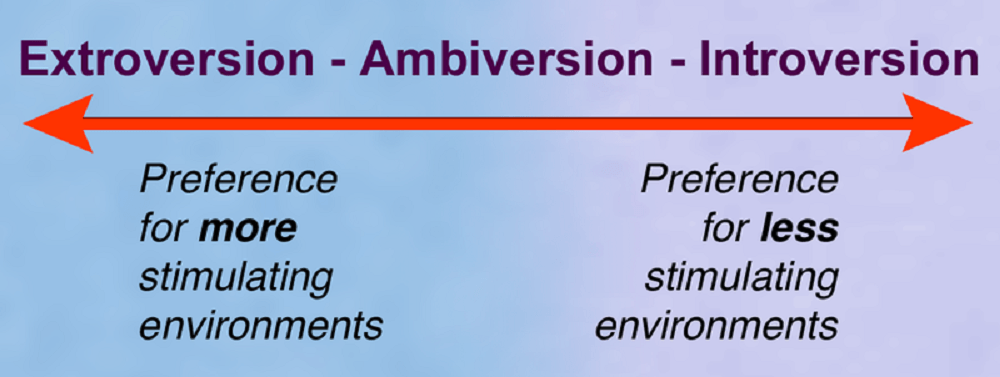The way you view and respond to social situations is the primary indicator on whether you are an introvert or an extrovert.
What is the difference between an introvert and an extrovert?
There are several popular misconceptions surrounding introversion and extroversion. And because of this, introverts, in particular, are often misunderstood. They are often branded as shy, aloof, and even antisocial. While extroverts are described as bubbly, friendly, charismatic, and fun. But it is important to understand that introversion and extroversion are not personality types in and of themselves — rather, they’re important pieces of the personality puzzle. They also aren’t the only two options — there’s a whole spectrum of introversion and extroversion, and almost no one is purely introverted or pure extroverted. In fact, science has coined a new term to describe those exhibiting an even mix of traits from both intro and extroverts; they are the ambivert.
What are the causes of introversion and extroversion?
Scientist believe that the causes of introversion and extroversion lie in the brain and how it responds to dopamine. Dopamine is a neurotransmitter that helps regulate the brain’s pleasure and reward system. It enables us to recognize rewards and move towards them. It is part of the guidance system for our emotions. In social situations, the extroverted brain is stimulated. It views social interaction as rewarding and responds as such. The thought of positive social interaction floods the brain with dopamine and drives the extrovert towards interaction as it is seeking to be rewarded. The pleasure center of an introvert brain functions the same way—but with one very distinct difference. Extroverts have a more active dopamine reward network than introverts—meaning extroverts need more dopamine to feel pleasure. When dopamine floods the introvert brain, introverts do experience the feeling of excitement but it is accompanied by the feeling of being overwhelmed. The introvert brain is more responsive to the neurotransmitter, acetylcholine. Like dopamine, acetylcholine is also linked to the brain’s pleasure center. The difference is, acetylcholine makes us feel good when we turn inward. It powers our abilities to think deeply, reflect, and focus intensely on just one thing for a long period of time. Research tells us that everyone’s nervous system has two modes: parasympathetic and sympathetic. When we use the parasympathetic side (nicknamed the “rest and digest” side), we feel calm and are focused inwardly. Our body conserves energy and withdraws from the environment; muscles relax, energy is stored, and our heart rate and blood pressure slow. The sympathetic side (a.k.a “full throttle”) puts us in a state of fight or flight. Our pressure and heart rate are elevated, we are alert and poised for action. Introverts thrive when they are operating in parasympathetic mode. This is the reason for the constant desire introverts have to be alone. Their desire and pension to engage in quiet, thoughtful activities away from others is not antisocial or moody behavior. It is a physiological need they have that is driven by their brain chemistry and function. When introverts are deprived of their alone time they can experience:
Fatigue Mental and physical exhaustion Inability to concentrate Irritability Increased anxiety Depression
The causes of introversion and extroversion are directly linked to how our brains operate and respond to neurotransmitters. So the best thing you can do for the introvert that needs time by themselves is to leave them alone.
